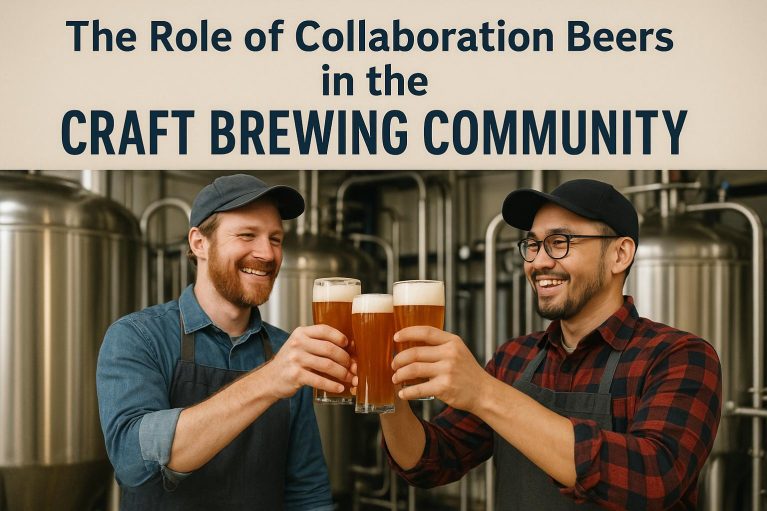The Concept of Collaboration Beers
In today’s dynamic craft brewing industry, collaboration beers represent a strategic and innovative partnership among breweries aiming to create distinctive brews. The core of these collaborations involves two or more breweries uniting their expertise, passion, and resources to design, brew, and market a beer that embodies their collective strengths and unique strengths.
Origins and Growth
The advent of collaboration beers can be traced back to the community-centered ethos of the craft beer industry. Unlike larger, commercial breweries, craft breweries often lean heavily on community interactions and shared values. In this spirit, collaboration beers serve as a living testimony to the power of collective effort and creativity in brewing. By pooling resources and talents, these breweries can explore new terrain and expand the boundaries of traditional brewing techniques and beer styles.
Craft beer collaborations began informally as friendly exchanges between brewers but have since blossomed into a common practice among breweries worldwide. As the craft beer movement gained momentum, these collaborations became increasingly popular, with many breweries using them as a platform to showcase their innovative capacity and reach wider audiences. The result is a rich tapestry of beer offerings that fuse different brewing cultures and techniques, delighting consumers with each new release.
Benefits of Collaboration
There are numerous advantages associated with collaborative brewing. At the forefront is the aspect of resource sharing. Brewing, as an operations-heavy endeavor, requires substantial investment in equipment, ingredients, and facilities. Through collaborations, breweries can pool these resources, leading to cost reductions and enhanced operational efficiency.
Beyond logistics, collaboration allows the fusion of diverse brewing techniques, ideas, and cultural nuances. The joint venture of different brewing philosophies often culminates in the conception of unique, groundbreaking beer offerings that might have been unattainable for individual breweries. Notably, collaboration beers tend to garner significant media attention, providing a marketing edge that can greatly amplify brand visibility and outreach.
A fundamental element of these endeavors is the learning opportunity they present. Collaboration is not just about merging operations but also about exchanging know-how and craft. It fosters an environment of perpetual learning and skill-enhancing within the craft beer community. Brewers can glean new perspectives on brewing practices, ingredient use, and even marketing strategies from their counterparts.
Notable Collaboration Beers
The craft beer industry has seen numerous *successful and notable collaboration beers*. A prime example is the collaboration between Sierra Nevada and Dogfish Head, which resulted in an array of highly celebrated brews. These collaborations have demonstrated that even established breweries can benefit from the fresh perspectives and techniques introduced by such partnerships.
Moreover, collaboration is not the sole domain of large breweries; smaller breweries often venture into collaborative projects too. For them, this is an opportunity to explore new markets and gain access to a wider customer base. These smaller entities can leverage collaborations to showcase their innovations on a broader stage, thereby bridging the gap between grassroots brewing and mainstream recognition.
Impact on the Craft Brewing Community
The influence of collaboration beers on the craft brewing community is profound. At its heart, it fosters a spirit of camaraderie rather than cutthroat competition, nurturing a supportive network that profits the entire industry. By fostering a collaborative rather than combative atmosphere, breweries can collectively push for more inventive solutions and diverse offerings that continually captivate and engage beer enthusiasts.
Furthermore, collaboration enables breweries to tackle broader industry challenges, including sustainability, regulation, and market expansion, more efficiently. For instance, joint ventures might focus on implementing sustainable brewing practices or launching initiatives aimed at environmental conservation. These projects marry brewing with broader social goals, aligning the craft beer community with contemporary values and concerns.
The result is a landscape of vibrant diversity in craft beer offerings. Each collaboration beer introduced to the market is a tale of cooperative innovation, offering consumers new flavors and styles to explore. In doing so, the craft beer industry reinforces its reputation as a space where creativity is the norm, not the exception.
For individuals seeking further insights into collaboration beers, exploring online resources such as CraftBeer.com can prove invaluable. Additionally, visiting local craft breweries allows for a firsthand understanding of the collaborative ethos that defines this exciting aspect of the craft beer world. Through experiencing these unique beer offerings, consumers can gain a greater appreciation for the skilled artistry and collective effort that goes into each collaborative brew unit.
Ultimately, collaboration beers are shaping the future of the craft beer industry. Through strategic partnerships, the craft brewing community stands united, ready to tackle whatever challenges and opportunities the future holds. By continually driving innovation and embracing the collective strength of craft brewers worldwide, the industry can ensure an enduring legacy of creativity and quality in beer production.

